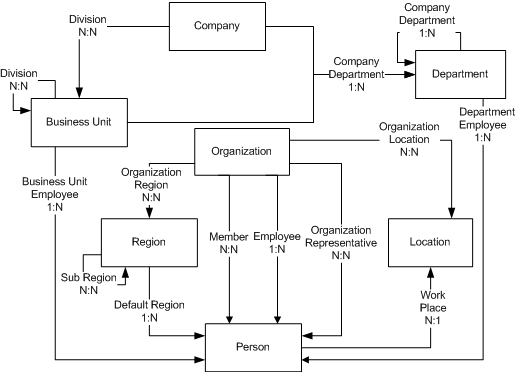Introduction to Data Models | ||
| ||
Data Model Diagrams
A data model illustrates object types used by an application and the relationships that connect them.
This graphic shows an example of a data model:

The rectangles represent object types; the lines represent relationships. The arrow shows at the "to" end of the releationship. For example, a Department is related to any number of Persons using the Department Employee relationship. This relationship has a cardinality of 1:N indicating that one Department can be related to any number of Persons. See Attributes for the complete list of attributes used by objects and relationships.